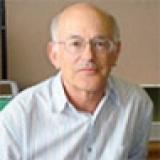
Kenneth Freeman
<p>Kenneth Freeman was born in Perth, Australia, in 1940. He studied mathematics and physics at the University of Western Australia, graduating in 1962 with first class honors. As a postgraduate he worked in theoretical astrophysics at Cambridge University, receiving his doctorate in 1965. He then received a postdoctoral appointment at the University of Texas and a research fellowship at Trinity College, Cambridge.</p><p>Freeman returned to Australia in 1967 as a Queen Elizabeth Fellow at Mount Stromlo Observatory, outside Canberra. Except for a year at the Kepteyn Institute in Groningen, he has worked at Mount Stromlo ever since. He is currently the Duffield Professor of Astronomy in the Research School of Astronomy and Astrophysics.</p><p>Freeman was one of the pioneers of a branch of astronomy now called Near Field Cosmology. By looking at the nearby universe for clues, he and the fellow practitioners of the field have made significant contributions to our understanding of the formation and evolution of galaxies and of the universe itself, with its weblike pattern of filaments of clusters and superclusters separated by vast voids of empty space. Their growth on all scales is highly dependent on the gravitational influence of dark matter.</p><p>In 1970 he published a paper proposing that an unobservable substance—today called dark matter—envelops spiral galaxies, a conjecture that is now a fundamental part of the standard cosmological model. In recent years Freeman has helped establish the field of “galactic archeology”—an influential area of research that uses the chemical compositions of stars to trace the evolutionary history of their host galaxy.</p><p>Freeman received the Dannie Heineman Prize for Astrophysics from the American Institute of Physics and the American Astronomical Society in 1999 and the Centenary Medal from the Australian government in 2003, among numerous other honors. He is a Fellow of the Australian Academy of Science, an Associate of the Royal Astronomical Society in Australia, and a Fellow of the Royal Society in London. In 2013 he delivered the Henry Norris Russell Lecture at a meeting of the American Astronomical Society.</p>

